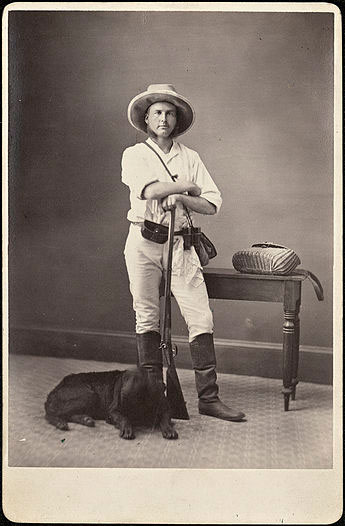NEW TRAILS IN MEXICO An Account of One Year’s Exploration in North-Western Sonora, Mexico, and South-Western Arizona 1909-1910 [SOLD]
 Forward to Friend
Forward to Friend
- Subject: Mexican Arts & Culture
- Item # C3773E
- Date Published: First Printed in 1912 - This Edition 1971
- Size: Hardback, 411 pages, profusely illustrated SOLD
 NEW TRAILS IN MEXICO An Account of One Year’s Exploration in North-Western Sonora, Mexico, and South-Western Arizona 1909-1910 by Carl Lumholtz, M.A.
NEW TRAILS IN MEXICO An Account of One Year’s Exploration in North-Western Sonora, Mexico, and South-Western Arizona 1909-1910 by Carl Lumholtz, M.A.
First Edition Publisher: T. Fisher Unwin, London 1912
First Edition by The Rio Grande Press Inc., Glorieta, 1971
Hardback, 411 pages, profusely illustrated, new condition
Preface to the First Edition
“During the years 1909-1910 I was commissioned by some influential friends to look into certain economical possibilities of the arid and little known country along the upper part of the Gulf of California, east of the Colorado River. My field embraced most of the District of Altar, in the State of Sonora, Mexico, as well as the southern part of the newly admitted State of Arizona; in other words, the region which by the early Spanish chroniclers was designated a Papagueria, after the native inhabitants, the Papago Indians. Some of this country, being the least accessible part of the Sonora Desert, is singularly little known, though lying, so to speak, at the door of the great empire of Yankee enterprise. My mission gave me an opportunity for geographical and ethnological studies, an account of which is here presented in popular form.”
Introduction to the New Edition
“The man who described the Sonoran Desert so well more than six decades ago was born in 1851 in Faaberg, near Lillehammer in Oestland, Norway. The woods and the fields of his native surrounding etched themselves into his character, and although he was forcefully persuaded by his father, a captain in the Norwegian army, to earn a degree in theology, a nervous breakdown enabled him to recuperate by collecting birds and animals for the zoological museum of the University of Christiania. ‘The beauty of nature took hold of me,’ he wrote, ‘and I felt my freedom from the confinements of metaphysics and scholasticism. I was overcome by emotion and wept from joy.’
“Lumholtz’ course was set. ‘It occurred to me what a misfortune it would be to die without having seen the whole earth.’
“Carl Lumholtz would be amazed and delighted could he return to the scene of his Arizona and northwestern Sonora wanderings. The nighthawks which captured his attention on the San Xavier Indian Reservation are still here, soaring over the desert at dusk, now attracted to the thousands of insects drawn by the floodlights that illuminate Mission San Xavier del Bac at night. And the miracle of summer, the croaking spadefoot and Colorado River toads which are brought back to life by the summer rains to enjoy their moment of procreation, are even at this moment rasping cheerily beyond the window of our desert home. The storms are here and the land is incredibly green.”
- Subject: Mexican Arts & Culture
- Item # C3773E
- Date Published: First Printed in 1912 - This Edition 1971
- Size: Hardback, 411 pages, profusely illustrated SOLD
Publisher:
- The Rio Grande Press [NO LONGER IN BUSINESS]
- Glorieta, NM


